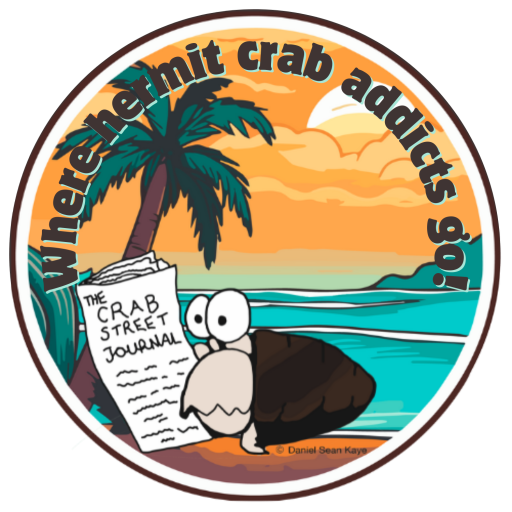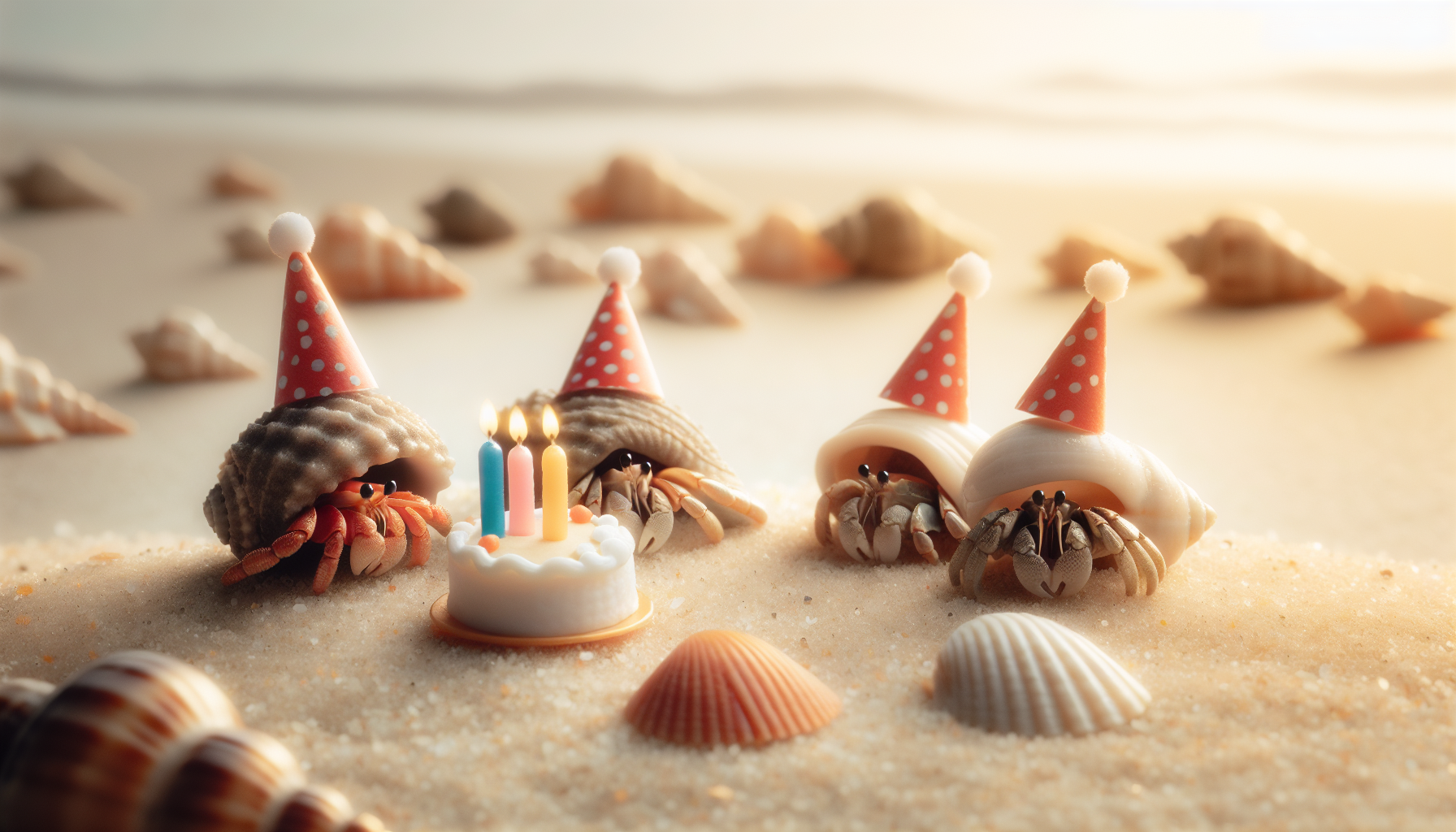written by Sue Latel March 8, 2006
Little Billy has had 3 hermit crabs since his 12 birthday. He has a 20 gallon tank housing his 3 small PP crabs. One day when he is at the store picking up some ocean salt water for his crabs, he spots a tank containing 2 poor little Ruggies that have no water except for a damp sponge, huge pellets of food that he doubts they have even attempted to eat, and no ground cover to protect them from the 100 watt heat lamp that is shining directly on them from an open tank top. Billy has been a very conscientious crab owner. He explored on-line information on how to care for hermit crabs and has all the bells and whistles to keep his crab people happy. He has proudly seen his crabs molt, grow and prosper for the past year. Billy knows that the little Ruggies will not last long in the current conditions they are in. He consults a clerk, advises her of the poor crabitat conditions, and notes that there will likely be no changes made based on his advice. Billy’s mom is a sweetheart and lets Billy rescue these poor crabs from their sorry condition. Billy finds out from the cashier that those are the last ones from their shipment last month, and now they can order more. (God forbid). Billy provides his new crabs with a dip into his tanks water dish, and then they scurry to hide in the handy cave he has for his crabs. Well, a week later, and Billy has still not seen his new crabs. He doesn’t think they have even been to the food dish. He isn’t too concerned since they are likely de-stressing in the wonderful conditions in his tank. Well a couple of more weeks pass. Billy thinks he seen one of his new guys in the water dish, now there is signs of digging, this crab must be molting. Well another couple of weeks lapse, and it is now high time to do a deep clean. Billy carefully digs around to see if he can locate where his crabs may be down molting so he proceeds cautiously. Billy takes out some of his plants and shells for rinsing, he has found the top of one of his new crab’s shells, he checks to see how the little guy is faring and discovers that it has died. Billy is heart broken. Finally the entire tank is unearthed and Billy discovers that neither one of his new little ruggies made it!! That darn PPS, it is just not fair!
Same example, but now in context of enlightenment of the PPDS solution:
Little Billy has had 3 hermit crabs since his 12 birthday. He has a 20 gallon tank housing his 3 small PP crabs. One day when he is at the store picking up some ocean salt water for his crabs, he spots a tank containing 2 poor little Ruggies that have no water except for a damp sponge, huge pellets of food that he doubts they have even attempted to eat, and no ground cover to protect them from the 100 watt heat lamp that is shining directly on them from an open tank top. Billy has been a very conscientious crab owner. He explored on-line information on how to care for hermit crabs and has all the bells and whistles to keep his crab people happy. He has proudly seen his crabs molt, grow and prosper for the past year. Billy knows that the little Ruggies will not last long in the current conditions they are in. He consults a clerk, advises her of the poor crabitat conditions, and notes that there will likely be no changes made based on his advice. Billy’s mom is a sweetheart and lets Billy rescue these poor crabs from their sorry condition. Billy finds out from the cashier that those are the last ones from their shipment last month, and now they can order more. (God forbid). Billy goes home and sets up his 5 gallon glass tank to ISO his new crabs. They need help to be able to recover from those horrible store conditions. Billy asks his mom to help check his math. He figured that the crabs were in very hot and dry conditions. He needs to keep the room temperature at 72 and boost the humidity to a bit over 60% for the next couple of days. He puts in a dish of ocean salt water, and a dish of regular dechlorinated water and a big fat chunk of coconut dipped in honey and sprinkled with bloodworm and spirulina. A few days later, he increases the humidity to 70%, he keeps the water filled up and notices there has not been too much food eaten. Oh well, he throws in some fresh apple and sprinkles it with some brine shrimp and hopes for the best. Well a few days later he increases the humidity up to 75%, this in large part by placing some soaked moss into the tank. Ah, they are eating some. Billy opts to keep the humidity at 75% and see if they continue to eat. Billy sees that they are starting to go more to the food dish. He tries them on some avocado and a silver side head. A few days later Billy adjusts the humidity up to 79% (which happens to be the RH mid-range for his 20 gallon tank), but there just is no crab to be found. So he checks on them a few days later, changes over the food, keeps tabs on their movement. Into the third week, he notices that more food is disappearing! He is glad since he was worried that they may not make it. He is going to let them stay in the ISO for another good week, just to make sure they keep eating well! Well about 5 weeks pass, and Billy wants to see his new crabs enjoy the main tank. Whoa, one of the crabs molted, and he is alive, yahoo!
Ok see the subtle difference?
This is one scenario. There are many others, and this includes crabs who do not suffer from poor conditions. Ultimately it is up to the crab owner how to proceed. The important thing to stress is that the responsibility lies with the consumer (purchaser of the crab(s)) to gather and observe as much information as possible about your pet’s existing living conditions as compared to what you will be providing them at home. This information will be the foundation of how you can implement a strategy to get them through the critical hurdle of PPDS.
Once a committee has had the opportunity to hone the procedural aspects, and provided the accepted time interval for defining PPDS deaths, we will try to specify more clearly a procedure to follow.
RFcrabs
Sue
Copyright © by Coenobita.org All Right Reserved.
Originally Published on: 2006-03-08 http://coenobita.org
More articles about PPDS:
PPDS Minimizing the Impact
Technique for Adjusting PPDS Crabs
Comparative Example for PPDS Practices
Preventing Death in New Hermit Crabs




